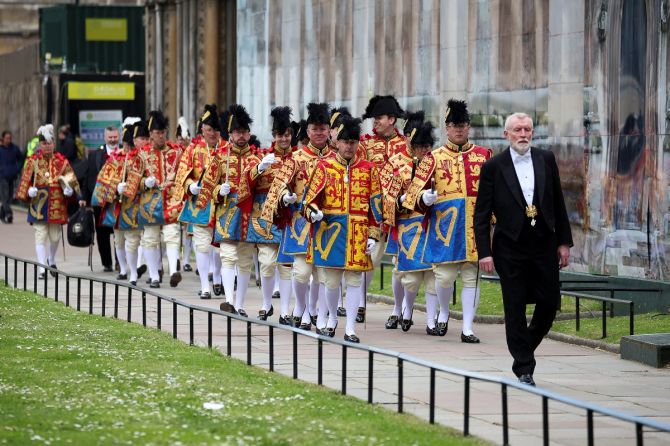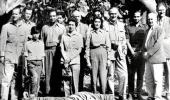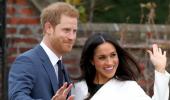Delhi Durbars, crowns and tiaras and the much talked about Kohinoor, of course.

As the stage gets set for the coronation of King Charles III and some monarchy gazing, the India connect over the centuries glimmers faintly through pages of colonial history.
King Charles III will be officially crowned at Westminster Abbey in London on Saturday, 112 years after the ceremony was held for his great grandfather King George V -- the only British monarch to subsequently travel to India to attend his coronation Durbar in Delhi.
Ahead of the May 6 coronation ceremony, which will see guests from around the world in attendance and will be broadcast across numerous platforms, the Kohinoor -- a diamond with a contested history -- and some of the crown jewels in possession of the British royal family have made headlines.
King Charles III is set to wear the St Edward's Crown, while Queen Camila will wear the Queen Mary's Crown (from the 1911 coronation) without the Kohinoor at the grand event.
The ceremony will evoke images of previous coronations -- more so of the 1911 coronation of King George V and Queen Mary, who had a profound link with India.
The crown for her June 1911 coronation was commissioned by Queen Mary from the Crown Jewellers, Garrard & Co., according to the website of the Royal Collection Trust.
It contained three large diamonds -- the Koh-i-nur, Cullinan III and IV, (also known as the Lesser Stars of Africa) -- which were later replaced with quartz crystal replicas so that the jewels could be used in alternative settings, according to a description of the 'Queen Mary's Crown 1911' on the website.
Six months later, the royal couple arrived in India and attended a spectacular Delhi Durbar, where they were proclaimed Emperor and Empress of India.
The 1911 Durbar was historic for two reasons.
It was the only one attended by the Emperor himself and this was where the shifting of the imperial capital from Calcutta to Delhi was announced.
The five-week royal tour from December 1911 to January 1912 was the first time a reigning British monarch set foot on Indian soil.
King George V and Queen Mary sailed from Portsmouth on RMS Medina.
The Delhi Durbar, a ceremonial gathering which marked George V's succession as King Emperor of India, was held on December 12, 1911.
As it was against the law to remove any royal regalia from England, it was decided that a new crown would be created for the Delhi Durbar.
This was designed by Garrard, according to the website of the Royal Collection Trust.
For King George V, the Imperial Crown of India was commissioned while for Queen Mary, the Delhi Durbar tiara.
One of the Delhi Durbar official portraits in the Trust's archives shows King George V wearing ermine robes and the Imperial Crown of India and Queen Mary wearing the tiara mounted with the Cambridge emeralds and the Delhi Durbar necklace with the Cullinan VII pendant.
The Imperial Crown of India has a silver frame laminated with gold and is set with 6,100 diamonds as well as emeralds, sapphires and rubies, says the Trust's website, adding the Delhi Durbar tiara was originally surmounted by 10 large emeralds to match the suite of diamond and emerald jewellery.
The sprawling grounds where the 1911 coronation Durbar and the previous two editions were held, is today called the Coronation Park. An obelisk marks the site of the grand ceremony.
"Here on the 12th Day of December 1911 His Imperial Majesty King George V Emperor of India Accompanied by the Queen Empress in Solemn Durbar Announced in Person to the Governors Princes and Peoples of India His Coronation Celebrated in England on the 22nd of June 1911 And Received From Them Their Dutiful Homage and Allegiance," reads a plaque installed at the base of the obelisk.
An imposing marble statue of King George V which earlier stood in the India Gate canopy was removed in the 1960s and later dumped at the Coronation Park beside the statues of various British-era viceroys, following protests after India's Independence.










